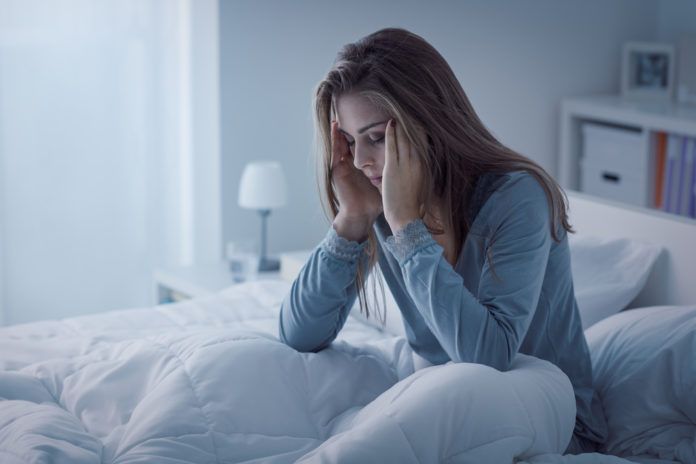What Are Sleeping Problems and Disorders?
A sleep disorder is a condition frequently prevents and impacts the ability of getting a restful night’s sleep. While occasionally having trouble falling asleep is normal, regularly having problems getting to sleep, waking up and feeling exhausted, and experiencing daytime sleepiness is a sign of a deeper issue.
Sleep disorders in women are more common, particularly related to their respective hormones, including changing hormonal levels during menstrual cycles, menopause, and pregnancy. The higher prevalence of depression and anxiety in females also places greater risk of sleeping problems and difficulties.
Nonetheless, when anyone does not sleep well, there are numerous repercussions of both physical and mental health, including weight gain, heart disease, diabetes, and depression. But it also works both ways, as it is well-known negative mood symptoms can cause sleeplessness.
Common Sleep Disorders
There are about 80 different types of sleep disorders and approximately 70 million Americans suffer from them. Among the laundry list of sleeping problems, these are just a few:
Insomnia
Insomnia is the inability to fall asleep or stay asleep and the most common sleep disorder. Sufferers tend to experience fatigue, difficulty concentrating, mood disturbances, and decreased performance at work or school.
Oversleeping Disorder
On the contrary of insomnia, oversleeping disorder is known as hypersomnia or “long sleeping.” People with oversleeping disorder might require an upwards of 10 to 12 hours of sleep per night to feel their best. But with the bulk of such a sleeping pattern taking a majority of the day, and considering daily life responsibilities, sufferers often feel excessive daytime sleepiness.
Sleep Apnea
Sleep apnea causes interruptions in breathing, which can be potentially serous, especially when untreated sleep apnea stops breathing repeatedly throughout the night.
Restless Leg Syndrome
Restless leg syndrome (RLS) is a condition in which the nervous system causes uncomfortable itches or pins and needles feelings in the legs. The urge is primarily desired to relieve such sensations, which can affect sleep.
Narcolepsy is a neurological disorder that involves the inability to regulate sleep-wake cycles, which often causes chronic daytime sleepiness and episodes in which they unwillingly and unexpectedly fall asleep, including while eating, amidst a conversation, and driving. Approximately 70 percent of individuals with narcolepsy experience cataplexy, which are episodes that cause sudden loss much strength.
REM Behavior Disorder
While most people solely experience dreaming mentally, those with REM behavior disorder act out their dreams physically by moving and punching limbs, getting out of bed, or talking to oneself or with others.
Shift Work Sleep Disorder
A shift worker is characterized as someone who follows a work schedule outside of a standard work day, including nurses and firefighters. Shift workers tend to get less sleep on a regular basis caused by alterations in the circadian rhythms, or the internal clock that responds light and dark and impacts body temperature, hormones and wake schedule.
How to Gain Control Over Your Sleeping Disorder
Self-Help Tips
First off, it is important to recognize how habits in the day can affect your sleeping patterns at night. Daily habits that can help influence a better night’s rest include:
- Exercise on a daily basis
- Limit caffeine intake in the afternoon hours
- Manage stress
- Keep any naps to under an hour and before mid-afternoon
At night, create a relaxing, healthy bedtime routine to help initiate sleep by:
- Supporting your body’s biological clock by staying consistent with bedtimes
- Powering down from electronics and quieting the mind
- Making sure the bedroom environment is quiet, dark, cool, and ultimately, comfortable
- Avoiding alcohol, cigarettes, and heavy meals late in the day.
- Relaxing, including taking a warm bath, reading, or listening to soothing music
So what do you do if you just can’t fall asleep or wake up and have trouble falling back asleep? Try following these steps:
- If you lay down and cannot fall asleep after 10 to 15 minutes, get out of bed.
- Do not turn on the TV or play on your phone, as the emitting blue light can further disrupt the natural circadian rhythm.
- Partake in a relaxing activity, including reading a book, writing in a journal, or listening to music. These activities should be done in another room and only return to the bedroom once you feel tired.
- Feeling tired? Go back to bed.
- Still can’t sleep? Try the tips again and consider calling in the professionals.
Call in the Professionals
If you’ve tried a variety of self-help remedies without success, schedule an appointment with a sleep specialist or ask your family doctor for a referral to a sleep clinic.
Even after creating and implementing self-help tips, a sleep disorder can continue disrupting your ability to fall and stay asleep. Schedule an appointment with a primary care provider or sleep specialist if still having difficulty falling asleep.
Furthermore, tracking your sleeping patterns and symptoms leading up to the appointment can help your healthcare provider to make a well-informed. Sleep diary entries might include:
- Times you went to bed and woke up
- What you did during restless periods, including meditating, grabbing a snack, or staying in bed quietly
- Total sleep hours and the numbers you believe were quality sleep
- What might have kept or woke you up i.e. noises, mental stressors
- The impact of caffeine, naps, exercise, etc. on sleep
- Any medications you took
- You can also use this sleep diary template provided by the National Sleep Foundation.
After gathering and analyzing data, your doctor may refer you to a sleep specialist if suspicious of a sleep disorder. A sleep specialist will further review your symptoms and may encourage and recommend a sleep study, which is a non-invasive, overnight exam that allows doctors to record and monitor sleeping patterns. The recordings are generally taken by a technologist and evaluated by a doctor to determine and diagnosis a sleeping disorder.









